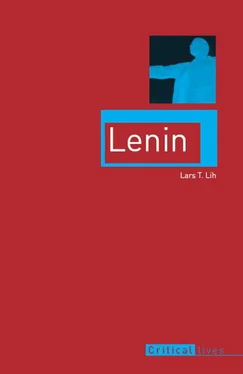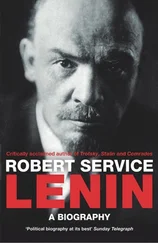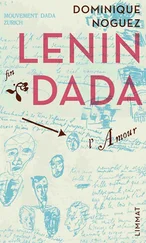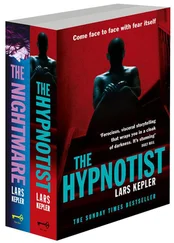Lars Lih - Lenin
Здесь есть возможность читать онлайн «Lars Lih - Lenin» весь текст электронной книги совершенно бесплатно (целиком полную версию без сокращений). В некоторых случаях можно слушать аудио, скачать через торрент в формате fb2 и присутствует краткое содержание. Город: London, Год выпуска: 2012, ISBN: 2012, Издательство: Reaktion Books, Жанр: Биографии и Мемуары, История, на английском языке. Описание произведения, (предисловие) а так же отзывы посетителей доступны на портале библиотеки ЛибКат.
- Название:Lenin
- Автор:
- Издательство:Reaktion Books
- Жанр:
- Год:2012
- Город:London
- ISBN:9781780230030
- Рейтинг книги:3 / 5. Голосов: 1
-
Избранное:Добавить в избранное
- Отзывы:
-
Ваша оценка:
- 60
- 1
- 2
- 3
- 4
- 5
Lenin: краткое содержание, описание и аннотация
Предлагаем к чтению аннотацию, описание, краткое содержание или предисловие (зависит от того, что написал сам автор книги «Lenin»). Если вы не нашли необходимую информацию о книге — напишите в комментариях, мы постараемся отыскать её.
Lenin — читать онлайн бесплатно полную книгу (весь текст) целиком
Ниже представлен текст книги, разбитый по страницам. Система сохранения места последней прочитанной страницы, позволяет с удобством читать онлайн бесплатно книгу «Lenin», без необходимости каждый раз заново искать на чём Вы остановились. Поставьте закладку, и сможете в любой момент перейти на страницу, на которой закончили чтение.
Интервал:
Закладка:
The American socialist William Walling travelled through Russia in 1905–7 with his wife Anna Strunsky who was of Russian origin. He met and interviewed many notable figures on both sides of the barricades, including Lenin himself. When he returned he wrote a long, enthusiastic book, still worth reading, entitled Russia’s Message: The True World Import of the Revolution . Walling’s 1908 testimony is all the more intriguing because he later became a violent opponent of the Bolshevik revolution and in 1920 wrote an informed diatribe against it, also worth reading. 11
Walling was a declared supporter of peasant socialism and regarded the Socialist Revolutionaries (SRS) as the fundamental Russian socialist party. For just this reason he much preferred the Bolsheviks to the Mensheviks. The Bolsheviks, he told his American readers, were ‘the progressive and more Russian part’ of the Social Democratic party. According to Walling, the Bolshevik acceptance of a peasant alliance reflected the real attitude of the workers themselves, who had little sense of class exclusiveness and wanted to fight together with the ‘little bourgeoisie’ of town and country. ‘The majority faction [= the Bolsheviks] realizes thoroughly the necessity of a full unity in the revolutionary movement.’ Walling did take note of the feeling, widespread among all Social Democrats, that ‘in the general movement, the working people should have the leading role’. Walling found this to be ‘a very wrong attitude, since the peasants in Russia are five times more numerous than all other working classes’. 12
In his brief account of his interview with Lenin Walling made clear that he did not like Lenin’s forecast that the peasant bourgeoisie would inevitably become a class enemy in the future. He was nevertheless impressed by Lenin’s ‘very full knowledge of the economic and political situation of other countries’ and found him to be ‘far more open-minded [about the peasants] than the leaders formerly in control of the party’. According to Walling, Lenin was at this time ‘perhaps the most popular leader in Russia’. 13
Lenin’s scenario of the peasant in revolution was extremely important to him personally. At the end of 1907 he set it all down in one of his most important if overlooked books, The Agrarian Programme of Social Democracy in the First Russian Revolution, 1905–1907 , a substantial volume of over 200 pages. This book is the fourth and last in the series of full-scale expositions of his heroic scenario (the first three being Friends of the People , 1894, Development of Capitalism in Russia , 1899, and To the Village Poor , 1903). Lenin took it hard when the tsarist government suppressed its publication. His close comrade Lev Kamenev describes the book’s fate in words that undoubtedly expressed Lenin’s own attitude: ‘The huge manuscript, the fruits of long and persistent labour, the result of a work attempted by no one else, lies for ten years, until 1917, in the bottom of Ilich’s trunk. It travels with him from Finland to Geneva, from Paris to Krakow, and after ten years, is borne back to Petersburg on the waves of the victorious revolution, and so, at last, finds a printer.’ 14When revolution broke out in Russia in 1917, almost Lenin’s first thought was: now I can publish my book! 15

The following scenario can be extracted from the dense argument of Lenin’s book. If the urban workers were class leaders, then the peasants were class followers. Lenin completely accepted the general Marxist idea that the peasants, scattered in isolated rural villages, could be politically effective only if they accepted the leadership of the more advanced urban classes – either the bourgeoisie or the proletariat. But his insistence on the peasant as follower did not exclude an exalted, even romantic view of the peasant in the revolution. Heroic leaders require heroic followers.
As we have seen, Lenin believed that capitalism was splitting the Russian peasantry into two groups, proto-proletarian and proto-bourgeois. Although this division would be vital for the future socialist revolution it was not so crucial in the case of the people’s revolution against the tsar. In this revolution, the peasantry as a whole would follow the lead of the proletariat in a crusade against the tsar. The ‘petty-bourgeois’ peasant was therefore still a crucial part of the revolutionary army. Indeed, the most remarkable feature of Lenin’s 1907 book Agrarian Programme is his enthusiasm about the revolutionary fervour of the petty-bourgeois peasant.

From 1902 the peasants had revealed themselves as effective fighters for the democratic transformation of Russia. The peasants were ready, not only to take the land of the noble estate-owners but, in so doing, to destroy the social base of the tsarist system. And this act of economic liberation would have radical political consequences: ‘The peasantry cannot carry out an agrarian revolution without abolishing the old regime, the standing army and the bureaucracy, because all these are the most reliable mainstays of the landed property of the pomeshchiki [gentry estate-owners], bound to this system by thousands of ties.’ 16By abolishing the old regime Russia would become a ‘peasant republic’, and this would be good for the peasants, good for the workers’ class struggle and good for Russia.
More unexpectedly, Lenin is also extremely enthusiastic about the ‘petty-bourgeois’ peasant as an agent of the capitalist transformation of Russia. Freedom would allow the enterprising peasant to evolve into a fermer (farmer) – a foreign-sounding word that evoked the enticing model of the progressive and dynamic capitalist farmer that Lenin associated with the United States in particular:
A free mass of farmers may serve as a basis for the development of capitalism without any need whatsoever of pomeshchik enterprise… Capitalist development along such a path should proceed far more broadly, freely, and swiftly owing to the tremendous growth of the home market and an upsurge in the standard of living, the energy, initiative and culture of the entire population. 17
A basic premise of Lenin’s heroic scenario was that capitalist transformation of Russia was absolutely inevitable. But Russia was still faced with a tremendously important choice: what kind of capitalist transformation? Peasant-based capitalist transformation was not the only possible scenario – in fact, the tsarist government was trying its hardest to set up a much more repressive gentry-based capitalism (as Lenin interpreted the aim of the so-called Stolypin reforms). Gentry-based capitalism was the ‘Prussian path’ to capitalism, while peasant-based democratic capitalism was the ‘American path’. Lenin urged Social Democrats to fight for the American path, even though this path required ‘what, from the standpoint of the philistine, or of the philistine historian, are very unusual and “optimistic” assumptions; it requires tremendous peasant initiative, revolutionary energy, purposiveness, organization, and a wealth of creative activity by the narod ’. 18This last remark expresses the very heart of Lenin’s outlook: rejection of ‘philistine’ scepticism in favour of an ‘optimistic’ romanticism about the ‘creative activity of the narod ’.
Читать дальшеИнтервал:
Закладка:
Похожие книги на «Lenin»
Представляем Вашему вниманию похожие книги на «Lenin» списком для выбора. Мы отобрали схожую по названию и смыслу литературу в надежде предоставить читателям больше вариантов отыскать новые, интересные, ещё непрочитанные произведения.
Обсуждение, отзывы о книге «Lenin» и просто собственные мнения читателей. Оставьте ваши комментарии, напишите, что Вы думаете о произведении, его смысле или главных героях. Укажите что конкретно понравилось, а что нет, и почему Вы так считаете.












